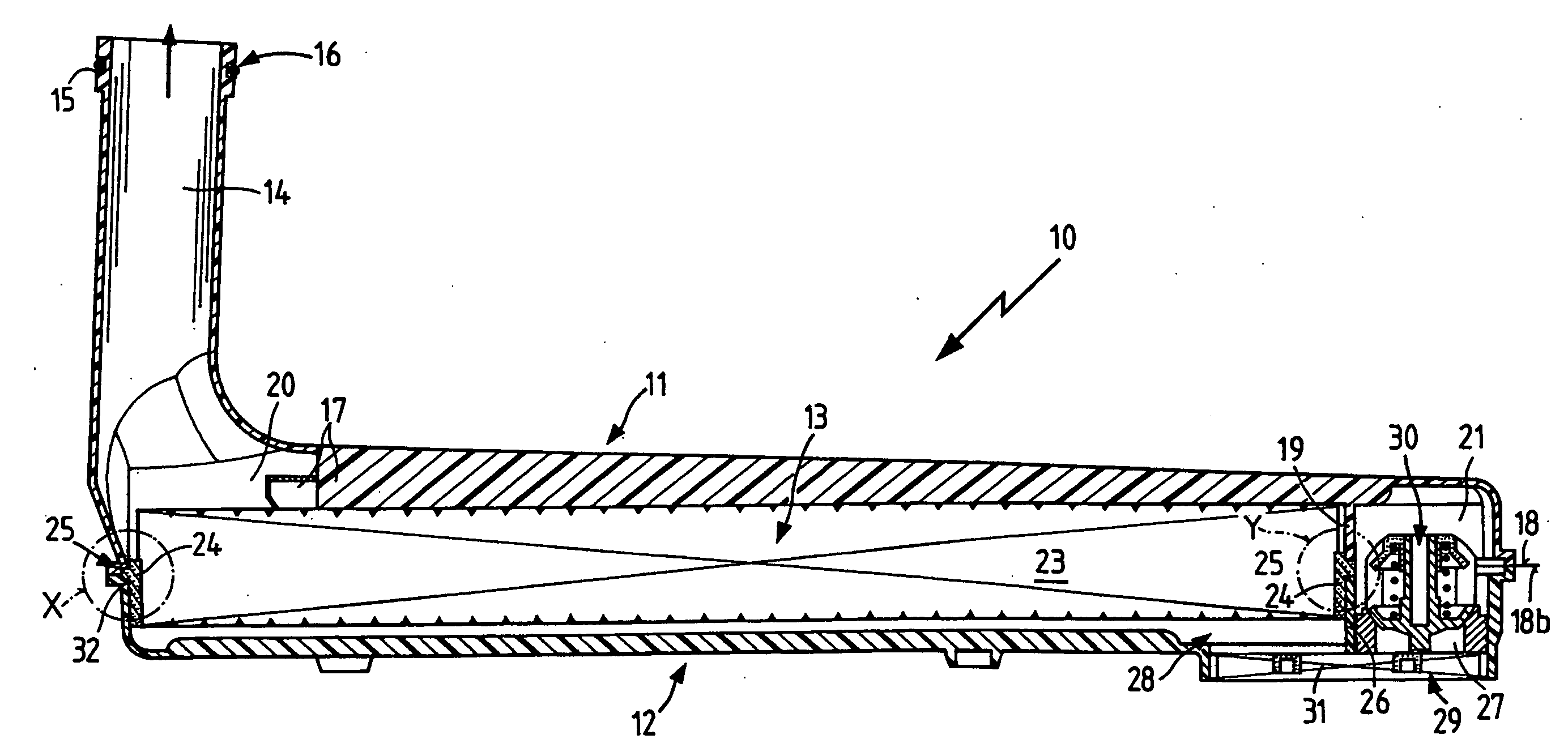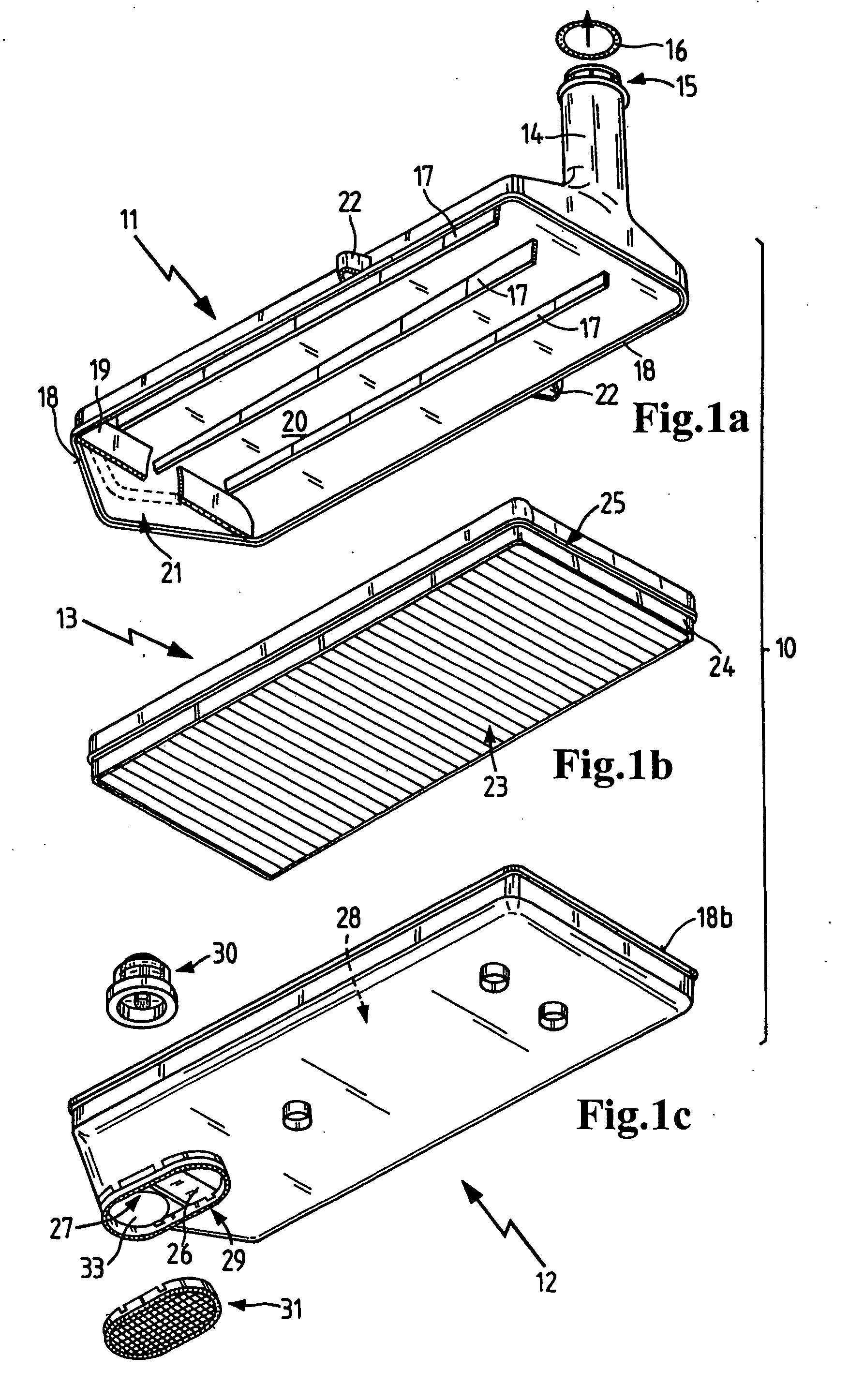Oil filter unit
a technology of oil filter unit and filter medium, which is applied in the direction of moving filter element filter, filtration separation, separation process, etc., can solve the problems of high manufacturing process requirements, substantial restrictions, and complex seals of replacement filter elements, so as to reduce the differential pressure of filter medium, simple and economical production, and increase the dirt holding capacity
- Summary
- Abstract
- Description
- Claims
- Application Information
AI Technical Summary
Benefits of technology
Problems solved by technology
Method used
Image
Examples
Embodiment Construction
[0037]FIGS. 1a to 1c show an exploded view of an oil filter unit 10 with the individual components disposed in assembly direction. Between an upper shell 11 shown in FIG. 1a and a lower shell 12 shown in FIG. 1c is disposed a filter element 13 depicted in FIG. 1b. A bypass valve 30 and a prefilter 31 are connected to the lower shell 12 when the unit is assembled (FIG. 2).
[0038] The upper shell 11 forms one housing section of the two-part housing. On the upper side, it has a tubular oil outlet fitting 14, on the discharge end of which there is a radial groove 15 to receive an O-ring 16. In longitudinal direction of the upper shell 11, on the lower side facing the filter element 13, fins 17 are formed which stiffen the upper shell 11 and form a support for the filter element 13 as illustrated in the assembled state shown in FIG. 2. The lower pan-shaped opening of the upper shell 11 is enclosed by the flat parting surface 18 along its entire periphery. Within the upper shell 11, a sup...
PUM
| Property | Measurement | Unit |
|---|---|---|
| pore size | aaaaa | aaaaa |
| pressure | aaaaa | aaaaa |
| size | aaaaa | aaaaa |
Abstract
Description
Claims
Application Information
 Login to View More
Login to View More - R&D
- Intellectual Property
- Life Sciences
- Materials
- Tech Scout
- Unparalleled Data Quality
- Higher Quality Content
- 60% Fewer Hallucinations
Browse by: Latest US Patents, China's latest patents, Technical Efficacy Thesaurus, Application Domain, Technology Topic, Popular Technical Reports.
© 2025 PatSnap. All rights reserved.Legal|Privacy policy|Modern Slavery Act Transparency Statement|Sitemap|About US| Contact US: help@patsnap.com



